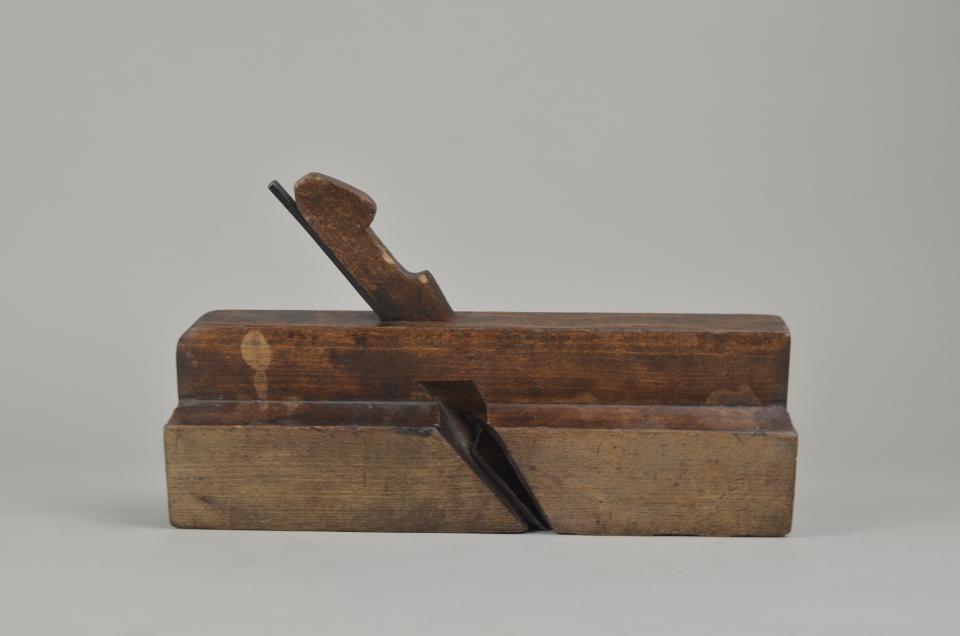
Length 23.5 x Width 4.9cm x Height 13.7cm
a- Length 23.5cm x Width 4.9cm x Height 8.4cm
b- Length 15.5cm x Width 2.4cm x Height 0.9cm
c- Length 18.1cm x Width 3.0cm x Height 0.4cm
Wooden molding plane comprised of a rectangular body (a), a wooden wedge piece (b), and an iron (c). The wedge and the iron fit together inside of the plane to hold the iron steady while it cuts at the wood below. Stamped on the heel of the plane is "I BLOWER", and "7/8". Stamped on the toe of the plane is "I BLOWER", and "DRYBURGH N. E. HOPE ONT."
Though they consist of only three parts—a body, a blade, and a wedge—molding planes are actually complex precision tools. The sole is shaped to the reverse of the molding and the bedding angle of the blade (its pitch) is directly related to the material it is intended to cut: 45º for softwoods, 50º for general use and 55° to 60º for hardwoods. Some planes have strips of a dense wood (usually boxwood, though lignum vitae was occasionally used in early planes) inserted where the sole receives the greatest wear. Known as boxing, these strips extend the life of the tool. During the first few passes, the plane may be tilted or ‘sprung’, with its fence running along the edge of the work. Springing gives greater control, but it also allows the mouth to be of a consistent width to support the shaving and take a smooth cut. Multiple passes take wider and wider shavings until the integral depth stop makes contact and the molding is complete.
